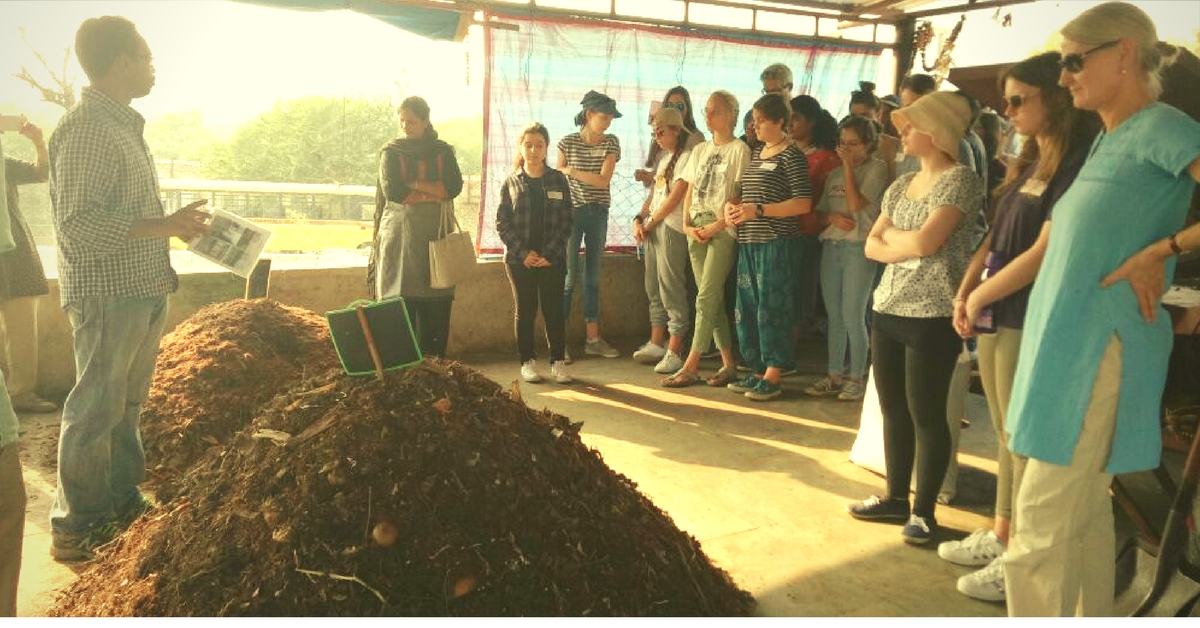How Responsible Citizens Can Help Villages with Waste Management
Here's the brilliant outcome, when ordinary citizens decided to fight for the environment.

Hyderabad, the beautiful ‘City of the Nawabs’, has two large reservoirs. Himayat Sagar and Osman Sagar. There are two old villages near the reservoirs, and both don’t come under the Hyderabad Municipality’s jurisdiction.
These beautiful villages are right next to the water and have native village homes and also several gated communities.
As is usual in India, the minute there is no oversight, a hazardous build-up of waste began to accumulate because the inhabitants freely dumped garbage near the water.
No one collects the garbage here, and the government is inert in this aspect. Waste management here falls under the purview of the village panchayat, a governing body that often finds itself without sufficient funds.
Since these villages are a little beyond city limits, and away from commercial complexes, little revenue by way of taxes is accrued by the government.
But while everyone decided to do nothing, Rajashree Pinnamaneni decided to take up the responsibility of waste-management and composting in the area.

With this in mind, she went to meet the Sarpanch who was receptive and encouraging – and so began the Gandipet Welfare Society.
And after much success, Rajashree and her team have been doing this for two years now.
Confident of her abilities today, she advocates that the process of waste management is not difficult. All you need to do is to put up a shed and get a shredder and a sieve if need be.
Three or four people can help take care of 30 tonnes of wet garbage per month, a ton a day. Rajashree also suggests that this compost can be sent to farmers as fertiliser for free.
Coming back to the villages, here is what the Welfare Society did.
It was decided to first segregate waste at the source. The Sarpanch provided two dustbins (red and blue), workforce to collect the garbage and a trolley to carry it out. One by one, each household was visited and trained in segregating waste.
The villages have 750 families, and the gated communities have around 450, making it a total of between 1000 to 1400 households. Each household from the gated communities provides Rs 300 each, and the collected sum is then used to process the village’s waste.
Rajashree and her team helped put up a shed where they began the process of composting the organic waste in an aerobic way.
This process uses coco peat and careful mixing and cooling to encourage the birth of maggots, who then break down all the garbage into compost.
10 tonnes of wet waste creates about 1 tonne of compost. When the composting is done, it is then sieved and turned into a fine texture – like tea. This is then packed and sold for Rs 40 a kilo.

Of all the non-bio-degradable waste, there is a company called Waste Ventures India, an ITC initiative. They send personnel every week or ten days and collect the plastics, tetra-packs, other non-bio-degradable waste.
The Gandipet Welfare Society has been able to produce around 3-4 tonnes of compost every month. Selling 4 tonnes helps them accrue Rs 1.60 lakh, which is used to pay the labourers, supervisors and the rest of the employees.
The rest of the employees are paid by the gated communities or the Sarpanch. So it is a system that not only works but becomes self-reliant in a short time.
Interestingly, Rajashree notes that the villagers were very responsive and responsible. The hiccups were caused by the well-heeled people living in gated communities. They didn’t like segregating their waste!
Rajashree is very happy with her team’s efforts. She gives a special mention to the District Collector of Ranga Reddy district, who was very helpful in providing the land for erecting the shed.
He also allocated land so a compost unit could be set up for another seven villages.
You may also like:While Others Struggle with Waste, This Mumbai High-Rise Created 100 Kg of Manure!
The Gandipet Welfare Society has put in great efforts to make sure they are the best at what they do. 15-20 strong, they are dedicated to implementing the concept of intelligent waste management in Gandipet village.
A stellar example of the people stepping up and joining hands with the local government to take a great initiative forward.
Like this story? Or have something to share? Write to us: [email protected], or connect with us on Facebook and Twitter.
NEW: Click here to get positive news on WhatsApp!
This story made me
- 97
- 121
- 89
- 167
Tell Us More
We bring stories straight from the heart of India, to inspire millions and create a wave of impact. Our positive movement is growing bigger everyday, and we would love for you to join it.
Please contribute whatever you can, every little penny helps our team in bringing you more stories that support dreams and spread hope.



















